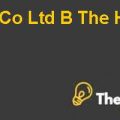
Sealed Air
Difference between leverage buyout and re-capitalization:
- Leverage Re-capitalization is an action taken by the organization to increase its leverage by taking out excess debt in order to pay special dividends or execute a share re-purchase program in order to re-adjust debt to equity ratio. In comparison to the leverage buyout, the difference between these two is that the latter one results in the excessive use of debt but for buying the organization by the management, there is no need to pay any sort of special dividend or share repurchases.
Benefits of leverage Re-capitalization:
- The Leverage Re-capitalization is undertaken with the following intention in the management’s mind:
- After implementing the World Class manufacturing initiative to improve the operations of the organization, the management is unable to find any attractive acquisition or investment opportunities anymore due to which they wanted to do something different.
- As part of their fiduciary duty, they felt the need to create some value for the shareholders, which could not be created better than by undertaking share repurchase program that would award them special dividend of $ 40 per share on 11 May 1989.
- It acts as a shark repellent, which in other words meant that it would act as a disincentive to any potential bidder for planning any sort of anti-takeover bid.
- It would allow the organization to better focus on creating cash flow from operations rather than relying on increasing accounting profit, which is merely a result of accounting adjustments.
- It would allow the organization to improve its capital budgeting process in order to avoid any wasteful investments and thus it would avoid any unnecessary expenditure.
- The most important part of initiating this move is to take advantage of benefits associated with taking excessive debt which would lower the overall cost of capital due to its tax benefit.
I would have done it as well however; the benefit of debt in the form of tax relief should not be considered alone as there are other factors that need to be taken into account before proceeding with such decision:
- Taking too much risk requires the organization to be good at generating cash otherwise it would face liquidation if there is no repayment made on time.
- It would increase the financial distress cost in the form of loss in sales due to competitive price war and customers reaction towards the over leverage.
- It would also reduce the cash flow available for other investments.
- It would place constraint on the organization’s ability to take initiative due to debt covenants.
So taking account of all these factors; my suggestion would be to carefully assess the organization’s situation before moving with such tactics of increasing the leverage in the overall capital structure.
Value creation from re-capitalization:
- The value created from the re-capitalization could be summarized below:
- First it comes from the tax benefits that are provided as a tax relief on interest payments.
- Secondly, the re-capitalization has allowed the organization to improve its operations further though undertaking cost cutting measure and to focus more on creating value for shareholders are necessary to generate sufficient cash flow.
- Finally, in addition to change priorities of the organization, it also focuses the management’s attention towards creating real value through giving emphasis on cash flow measures.
In addition to above, the re-capitalization allows the organization to improve its performance by taking various initiatives that not only align the interest of management with that of shareholders but also allows it to continue creating value for shareholders.
In anticipation of the special dividend payment, the stock price rises to $ 53 however; the ex div price closed at 12 ½ on 12 May 1989 but the stub price eventually end the year at 20 3/8.
Moreover; at the end of year, the organization is able to repay its debt and note payable by 30 million and 5.1 million respectively. Thus, the post period after the re-capitalization......................
This is just a sample partial case solution. Please place the order on the website to order your own originally done case solution.
Market leadership and technological innovation, involving marked Sealed Air in the U.S. protective packaging market. Several small regional producers have introduced products that are less effective than Sealed Air, but similar in appearance and cheaper. The company must determine its response to this new competition. Possible options range from doing nothing to introducing a new product. Causes the product line management, in particular, cannibalization, and allows for the development of a marketing plan for any new product. The software for this case available (9-587-513). "Hide
by Robert J. Dolan Source: HBS Premier Case Collection 17 pages. Publication Date: March 11, 1982. Prod. #: 582103-PDF-ENG











